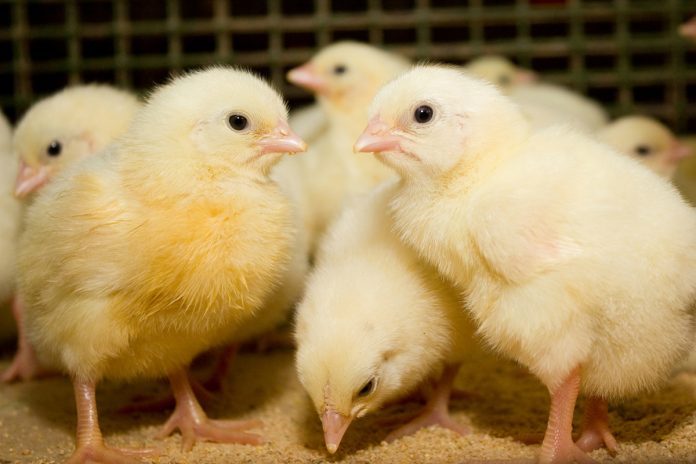Dr E. David Peebles from the Poultry Science Department at Mississippi State University details the accurate determination of embryo temperature and its relationship to the functional characteristics of broiler hatching eggs
Eggshell temperature has been routinely used in commercial settings to pragmatically estimate internal egg temperature (Lourens et al. (2005) and to serve as a subsequent indicator of embryo body temperature (Janke et al., 2004). However, because eggshell temperature is influenced by the thermal conductivity of the eggshell and the pattern and velocity of air flow within the incubator (Lourens et al., 2011; Ozcan et al., 2010), it may not precisely reflect actual internal egg temperature.
Direct measurement of the internal temperature of eggs has been used to more accurately assess the level of heat production and the body temperature of embryos during incubation (Janke et al. (2004). Various methods that have been employed to directly measure internal egg or embryo temperature have exhibited certain limitations, which include physiological invasiveness, egg contamination, the alteration of embryo metabolism and an increase in embryo mortality (Janke et al., 2004; Turner, 1990).
Nevertheless, Pulikanti et al. (2011a) have successfully inserted transponders into the air cells of broiler hatching eggs between 12 and 14 days of incubation without any associated adverse effects on eggshell porosity or embryogenesis or any noted physiological stress to the embryo. This relatively non-invasive procedure has allowed for the accurate determination of embryo temperature through the last week of the incubational period. This procedure also enables investigators to detect variations in embryo metabolism and subsequent heat production that other external methods, such as those used for measuring eggshell temperature, are unable to detect.
Relationship of embryo temperature to the functional characteristics of eggshells
Pulikanti et al. (2011b) used temperature transponders to record the temperature of the air in the incubator immediately surrounding the egg. At the same time, they implanted transponders in the air cells of those same eggs to record their internal temperature. These concurrent temperature readings were used to more accurately calculate the water vapour pressure gradient across the shell and for the subsequent precise calculation of absolute and relative (adjusted to egg weight) eggshell water vapour conductance.
Pulikanti et al. (2012b) later employed these same methods to further compute the conductance constants of eggs, in which the length of incubation was included as a variable in the calculation. Accurate determinations of the above variables are necessary in research studies where the specific functional properties of the eggshell are required.
Relationship of embryo temperature and the functional characteristics of eggshells to the physiological characteristics of embryos and posthatch broilers
Pulikanti et al. (2011b) reported that the internal temperature of live embryonated eggs exceeded those of non-embronated eggs between 10.5 and 18 days of incubation. The temperature difference increased from approximately 0.025°C on day 10.5 to 0.80°C on day 18, with the average difference over the entire period being 0.50°C. The semicircadian patterns in temperature observed were more accurately detected by transponders that were implanted in the air cells of the eggs.
Further work conducted by Pulikanti et al. (2012a) showed that a higher relative eggshell conductance, calculated using internal egg temperature from transponder readings, results in an increase in embryonic metabolism which then leads to an increase in growth and yolk sac absorption.
Pulikanti et al. (2013) also later confirmed that embryo temperature and subsequent relative eggshell conductance can influence physiological variables in birds during both the middle and late posthatch grow out periods. For example, it was shown that relative body and breast muscle weights on day 48 posthatch were positively correlated with relative eggshell conductance and eggshell conductance constant values and that relative breast muscle weight was negatively correlated with embryo temperature. These reports indicate that accurate determinations of embryo temperature and associated eggshell functional characteristics are necessary in determining the physiological status of the embryo and in predicting the posthatch performance of broilers.
Summary
Further technological advancements and refinements of transponder implantation and temperature recording procedures may increase the practicality of temperature transponder use in commercial settings. This methodology has the potential to provide commercial hatchery managers with a more accurate means by which to regulate incubation conditions to better suit the broiler embryo and to subsequently lead to increased production profits.
References
Janke, O., B. Tzschentke, and M. Boerjan. 2004. Comparative
investigations of heat production and body temperature in embryos of modern chicken breeds. Avian Poult. Biol. Rev. 15: 191-196.
Lourens, A., H. van den Brand, R. Meijerhof, and B. Kemp. 2005. Effect of eggshell temperature during incubation on embryo development, hatchability, and posthatch development. Poult. Sci. 84:914-920.
Lourens, A., R. Meijerhof, B. Kemp, and H. van den Brand. 2011. Energy partitioning during incubation and consequences for embryo temperature: A theoretical approach. Poult. Sci. 90:516-523.
Ozcan, S. E., S. Andriessens, and D. Berckmans. Computational study of the heat transfer of an avian egg in a tray. 2010. Poult. Sci. 89:776-784.
Pulikanti, R., E. D. Peebles, L. W. Bennett, W. Zhai, and P. D. Gerard, 2013. Physiological relationships of the middle and late post-hatch performance of broilers to their embryo and eggshell characteristics. J. Poult. Sci. 50(4):375-380.
Pulikanti, R., E. D. Peebles, and P. D. Gerard, 2011a. Physiological responses of broiler embryos to in ovo implantation of temperature transponders. Poult. Sci. 90:308-313.
Pulikanti, R., E. D. Peebles, and P. D. Gerard, 2011b. Use of implantable temperature transponders for the determination of air cell temperature, eggshell water vapor conductance, and their functional relationships in embryonated broiler hatching eggs. Poult. Sci. 90:1191-1196.
Pulikanti, R., E. D. Peebles, W. Zhai, L. W. Bennett, and P. D. Gerard, 2012a. Physiological relationships of the early post-hatch performance of broilers to their embryo and eggshell characteristics. Poult. Sci. 91:1552-1557.
Pulikanti, R., E. D. Peebles, W. Zhai, and P. D. Gerard, 2012b. Determination of embryonic temperature profiles and eggshell water vapor conductance constants in incubating Ross x Ross 708 broiler hatching eggs using temperature transponders. Poult. Sci. 91:55-61.
Turner, J. S. 1990. The thermal energetics of an incubated chicken egg. J. Therm. Biol. 15: 211-216.
Please note: this is a commercial profile
Dr E. David Peebles
Poultry Science Department, Mississippi State University
Tel: +1 662 325 3379











